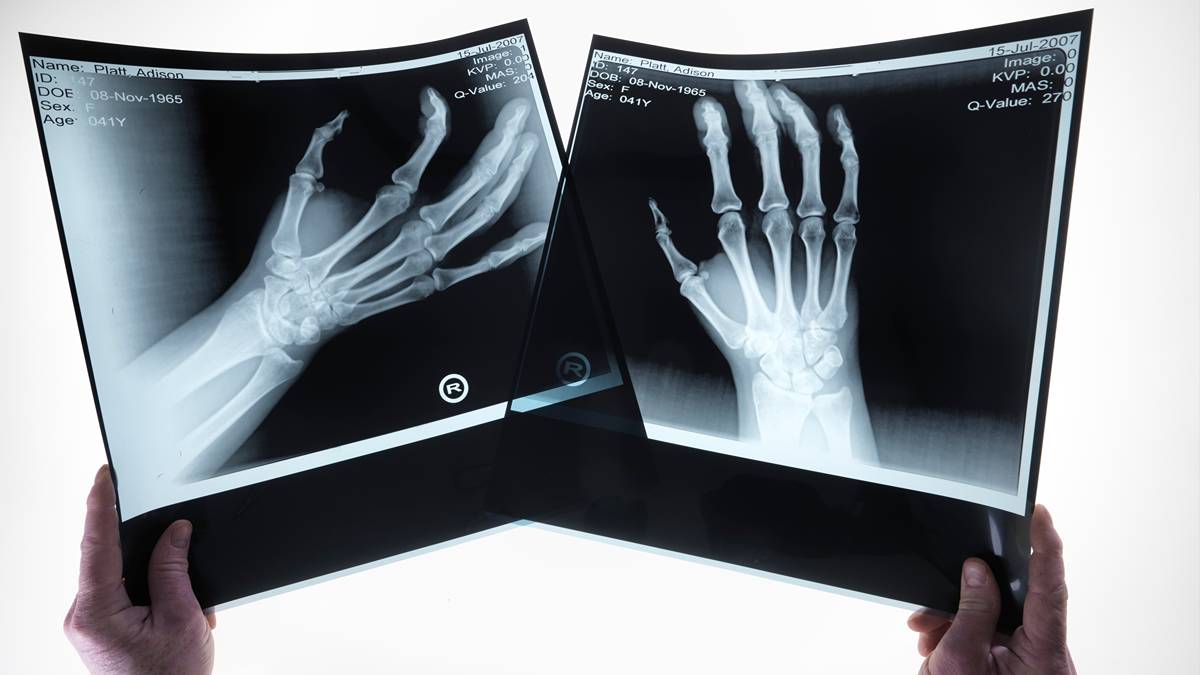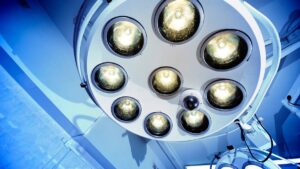Biocurious: In clinical terms, Singular Health ensures the right arm knows what the left arm is doing

Too often than not, clinicians can't access previous patient images and that leads to added costs and diminished care. Pic via Getty.
- Multiple patient imaging costs the US health system US$30 billion a year
- Singular’s 3Dicom software provides a “rail” to connect disparate image archives
- The company has launched a pilot program with the US hospitals intermediary, Provider Network Systems (PNS)
For all the advances in medical imaging, clinicians face a simple everyday problem that in the US costs the health system US$30 billion a year.
The issue? A patient is scanned at one facility but a doctor at another cannot access the image. As a result, the patient is sent off for a duplicate scan – which wastes more than money.
“This means unnecessary exposure to radiation and delays in diagnosis and treatment intervention and having to rebook consultations,” says Singular Health Group Ltd (ASX:SHG) chief operating officer Dr Martina Mariano.
“The whole process is highly inefficient.”
Singular PACS a punch in giant US imaging market
The nub of the problem is that the images reside in separate Picture Archive Communications Systems (PACS) within a hospital.
In the US, parties such as ASX champion ProMedicus (ASX:PME) are entering contracts with large hospital groups that overhaul group-wide imaging systems at great cost.
But for the time being the market remains highly fragmented and – as a result – the clinical right arm doesn’t know what the left arm is doing.
“When it’s not cost effective for them to replace the existing infrastructure … they need a bolt-on solution to transfer the data,” Mariano says.
Developed over many years, Singular’s ‘PACS agnostic’ 3Dicom software is a secure “rail” that connect the facilities.
“We are a bolt-on solution,” Mariano says.
“We connect into those systems and enable the clinical provider outside of the network to receive those images.”
Difficult cancer operation spurs a bright idea
Perth-based Singular is making a concerted push into the US market, where it has entered a pivotal tie-up with Provider Network Systems (PNS), an expansive Managed Service Organisation (MSO).
Given Singular’s convoluted evolution, Mariano says there’s been some investor confusion about the company’s charter over the years.
The company was founded in 2017 by Perth oncologist Dr Jason Tan, who had tackled a difficult inoperable ovarian cancer case.
He developed the tech to convert the standard two-dimensional images in a Dicom format to interactive 3D models that could be used in virtual reality (VR) applications.
Dicom is ‘digital imaging and communications in medicine’, a worldwide standard for medical images
“He could put the VR headset on and look at the anatomy of the patient to understand the relationship between the organ and the tumour mass,” Mariano says.
“That was very hard to see from standard 2D images.”
Needless to say, the operation succeeded.
A new Singular focus
Singular’s business has evolved since then.
The company itself was founded in 2018 as MedVR by Denning Chong, a Perth-based lawyer and venture capitalist, and the current CEO.
Having by then adopted its current moniker, Singular listed on the ASX in February 2021, having raised $6 million at 20 cents apiece,
After considerably more capex, the VR tool evolved to the 3Dicom viewing software.
“Rather than just working on VR, this conversion meant the software could operate on any consumer-grade device,” Mariano says.
“The company then added further functions, including the ability to share medical imaging records in a full-secure way (including between providers and patients).
“We can share the Dicom files – the imaging data – but also the attached reports.”
The software enables medical professionals to visualise standard CT, MRI and PET scans in 2D and 3D in real-time, with built-in collaboration features.
3Dicom also deploys AI models to streamline clinical workflows, thus preventing misdiagnosis, enabling preventative diagnosis and stratifying patients according to risk.
MSOs the way to go in US market
Singular is preparing for its US rollout of 3Dicom, which the US Food and Drug Administration approved in October 2022.
But it’s one thing to have a you-beaut device approved and another to achieve commercial sales at scale.
Singular cites an addressable US market of US$19 billion, across 1.3 million physicians. Under the software-as-a-service model, the company licenses the product at US$800 per practitioner, per year.
But signing them up one-by-one will never cut it.
Singular’s business-to-business approach involves selling through the MSOs, which act as an intermediary between the hospitals, the physicians and the health insurers who pay the bill.
“The MSOs and the insurers manage multiple hospitals and clinicians. So, you can capture a lot of users in the one go,” Mariano says.
Pilot project takes off
In mid-June Singular inked a ‘binding enterprise agreement’ with Provider Network Systems, worth an initial $2 million.
Ultimately, PNS covers 3.7 million insured patients.
In the initial pilot phase, PNS will deploy 1000 3Dicom licences at facilities in Puerto Rico, Florida and Texas.
PNS buys the licences for US$800 apiece, with a further US$500,000 payable on “satisfaction of AI model marketplace and image repository development and integration”.
If PNS is happy after the six-month pilot, a national rollout will ensue.
Mariano says PNS alone spent US$1.5 billion a year on duplicate images.
“Even reducing this by 5% would be an incredible opportunity,” she says.
“MSOs get a fixed budget from the health insurers, so the only way to they can make money is by improving operational efficiencies.”
The pilot program will quantify the cost savings.
Despite its importance, the PNS tie up is non-exclusive. Indeed, the company has also carried out small pilots with other parties.
Singular has also fielded interest from universities and associated teaching hospitals. This is in view of deploying 3Dicom for commercial and academic use.
Bolstering the balance sheet
In conjunction with the PNS deal, Singular raised $8 million at 35 cents per share.
Having taken an earlier $500,000 cornerstone stake, PNS subscribed for a further $150,000 in the raising.
Singular reported June quarter receipts of $498,000, taking the year’s tally to $639,000. These inflows pertained mainly to the PNS deal.
After quarterly operating cash burn of $324,000, the company has cash of $13.7 million.
“This is enough to fund the pilot and the national rollout,” Mariano says.
Singular shares have gained threefold over the last 12 months, valuing the company at a tad under $100 million.
US first, then the world
Currently, even the fast-growing Pro Medicus accounts for about 10% of the US medical imaging market.
“There’s space for multiple players and all of them can make money even with a smaller market share,” Mariano says.
“So, there will still be lots of lack of interoperability.”
She says Pro Medicus is not a direct competitor and “we would be open to direct conversations and potential collaborations”.
Mariano says Singular has been fortunate to secure a partner to navigate the complex US healthcare landscape.
“Because we are small, we can adapt quickly and in a way the meets the requirements of our customers and end users.”
She says US entrants need to be clear on how they will be paid. Generally, that’s either by way of reimbursement or proving a quantifiable saving to a party such as an MSO.
“The market is moving fast so you need to be agile and able to adapt quickly.”
While Singular’s – er singular – focus is on addressing the needs of MSOs and health plans, Mariano says the lack of interoperability is a worldwide issue.
“Our ultimate goal is to roll out 3Dicom globally”.
Related Topics

UNLOCK INSIGHTS
Discover the untold stories of emerging ASX stocks.
Daily news and expert analysis, it's free to subscribe.
By proceeding, you confirm you understand that we handle personal information in accordance with our Privacy Policy.








